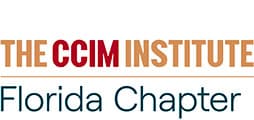Refinancing Before or After an Exchange
Seasoned real estate investors who want to completely defer capital gains through a 1031 exchange must understand one cardinal rule – if they receive cash at closing or if exchange proceeds are used for anything but like-kind replacement property, the transaction will be at least partially taxable. Due to this lack of access to cash from the sale of an exchanged property, many real estate investors plan to refinance the property immediately before their exchange to pull out equity (or, they plan to refinance their replacement property once acquired, immediately after the exchange concludes).
Although it is possible to refinance before or after an exchange without triggering a tax consequence, investors should carefully consider their options before doing so. The IRS has taken the position in some cases that the refinancing creates a taxable event in the exchange. Typically, this is the conclusion when the refinancing is done to avoid tax, rather than for a separate business purpose. Despite this risk, an investor should usually be able to refinance the relinquished or replacement properties and obtain cash without capital gains taxation, as long as they establish that the refinance had “independent economic substance.”*
Another important note is that there is very little case law or indication from the IRS on whether refinancing after an exchange poses an issue, compared to the availability of cases discussing pre-exchange refinancing. It’s generally thought that the post-exchange refinance differs in that the taxpayer will retain responsibility for paying the post-exchange debt, whereas if refinancing the relinquished property, they’d be relieved of the obligation upon their sale of the property.** Thus, many tax practitioners believe that it is better to refinance the replacement property after an exchange rather than refinancing the relinquished property before an exchange. Certain taxing authorities, such as the California Franchise Tax Board, may look more critically at post-exchange refinancing, however.
Every situation is different, and investors should discuss their plans with their tax advisors, but the following suggestions may help investors structure a refinance so that the funds received are not taxable:
- The loan should have a clear business purpose and that business purpose should be well documented in the investor’s files. In other words, the refinance must have independent economic substance.
- The refinance should occur as far away in time as possible from the closing of the relinquished or replacement property.
- The refinance should be documented as a separate transaction and should not appear on the same closing statement as the closing of the relinquished or replacement properties. In a transaction where the taxpayer receives proceeds from a refinance in the same closing as its sales proceeds, those funds would be seen as taxable boot received from the sale.
In any event, it is important to consider the risks and discuss your plans with your tax advisor, in order to ensure that there are any unintended consequences to your exchange should you plan to refinance your investment property just before or after the transaction.
* See Garcia v. Commissioner of Internal Revenue, 80 T.C. 491, Tax Ct. Rep. (CCH) 39937, 1983 WL 14804 (1983).
** See Question A-2a of the American Bar Association’s Report on Open Issues in Section 1031 Like-Kind Exchanges, 1992.
Source: https://www.firstexchange.com/safely-refinance-a-1031-property
About CCIM
“CCIM stands for Certified Commercial Investment Member. For more than 50 years, CCIMs have been recognized as leading experts in commercial investment real estate. The CCIM lapel pin denotes that the wearer has completed advanced coursework in financial and market analysis, and demonstrated extensive experience in the commercial real estate industry.”

0 Comments
Leave a reply
You must be logged in to post a comment.

